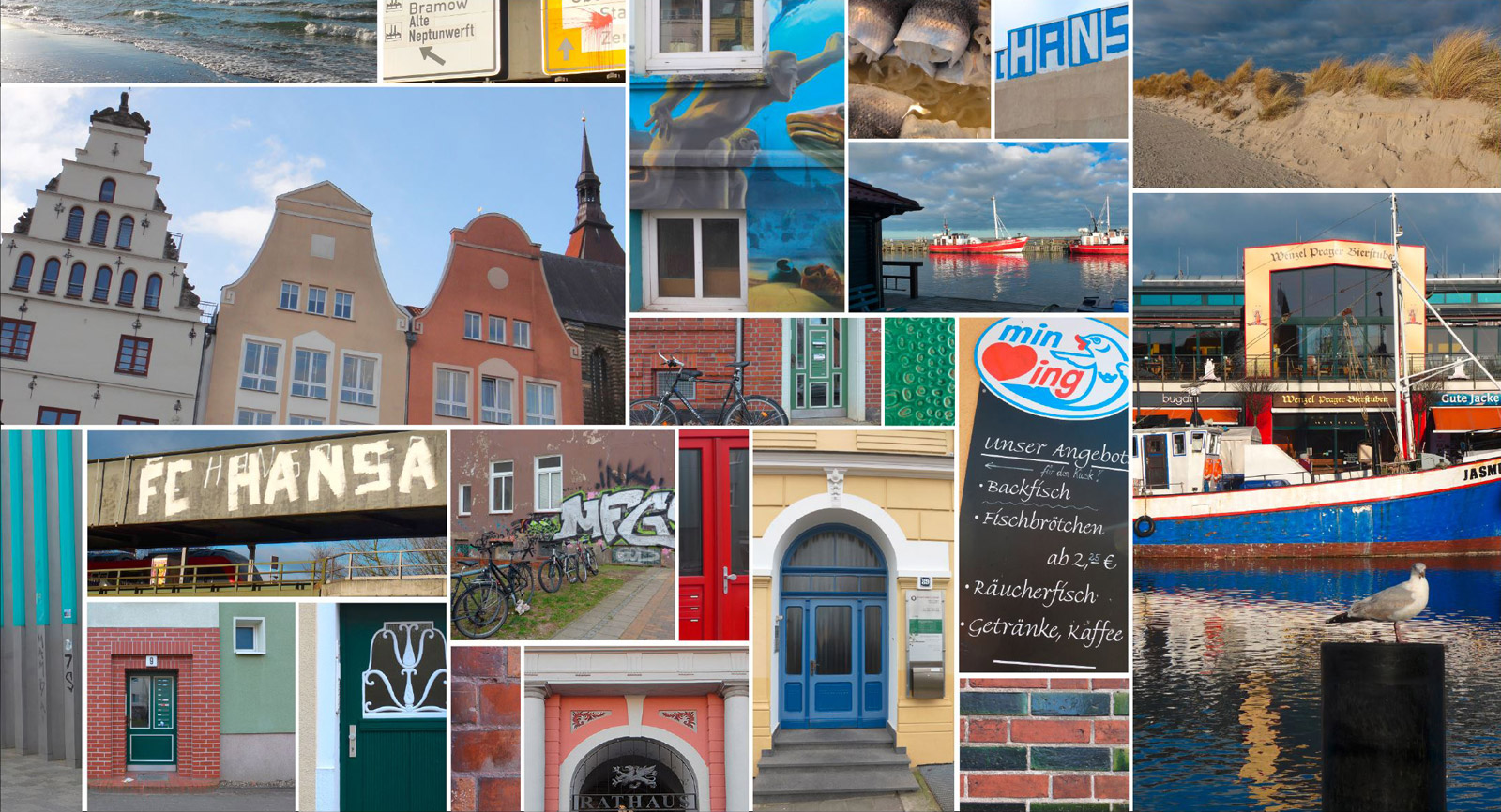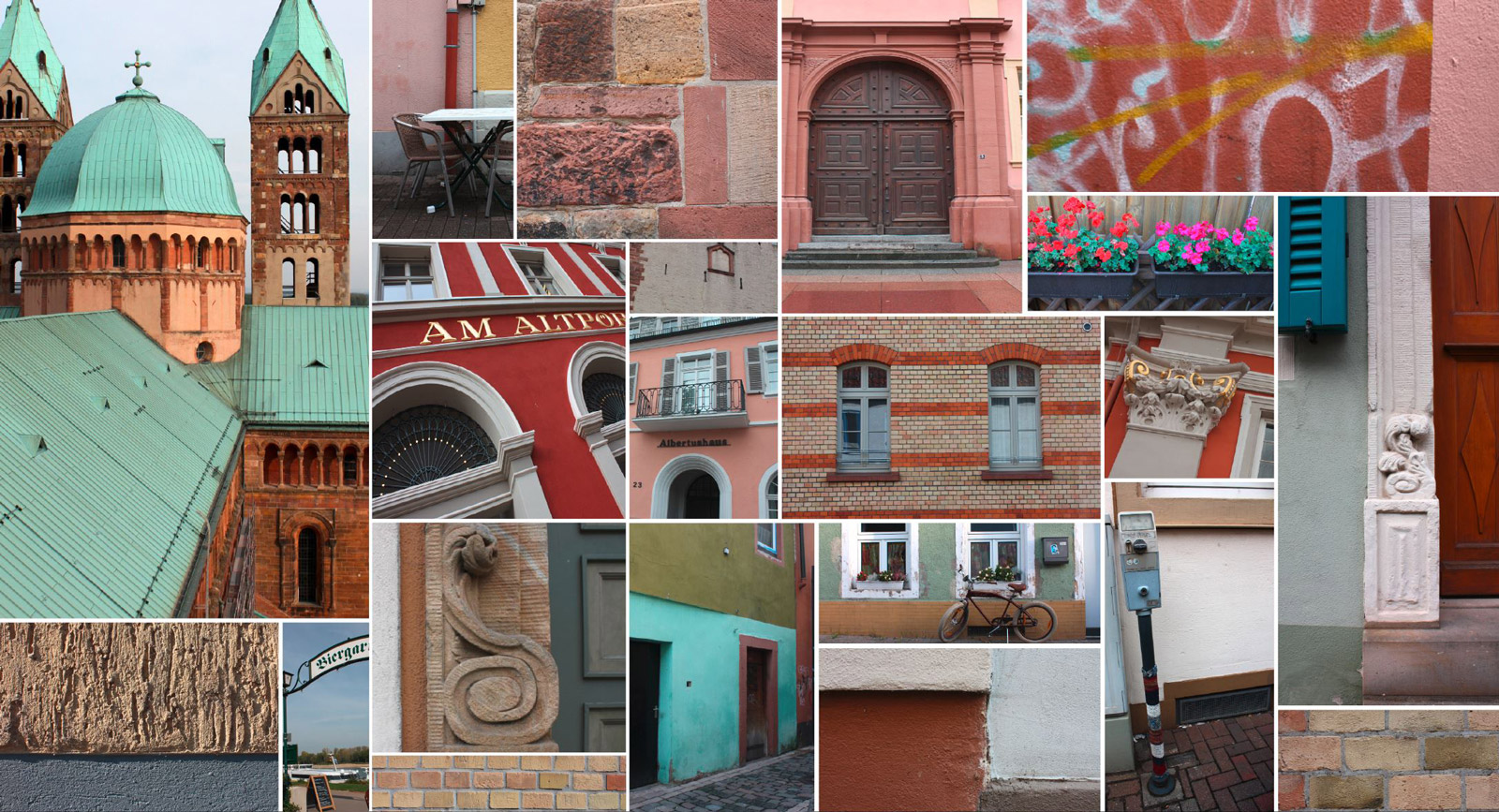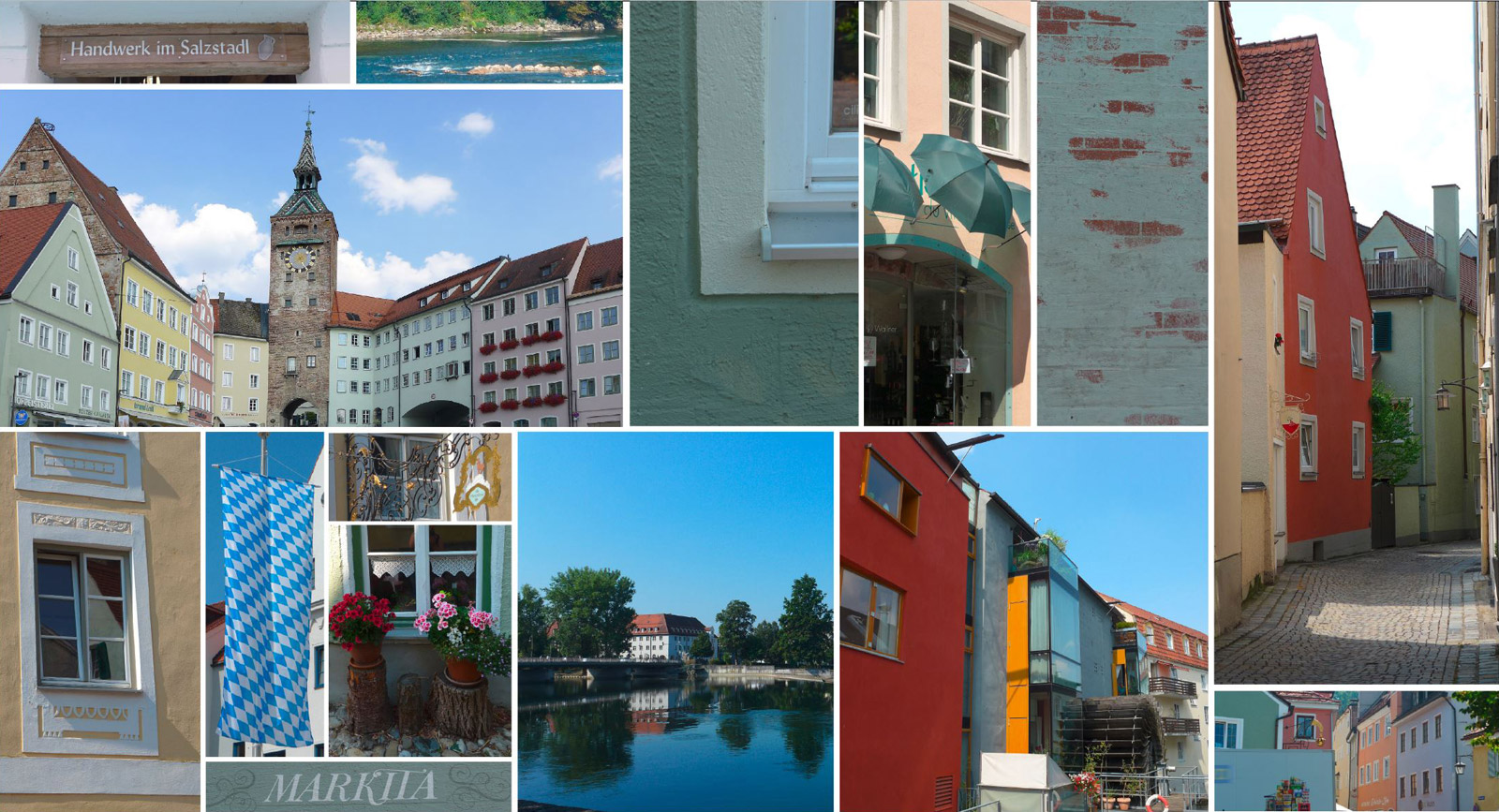Colour Research Vol.2
Impressions from German Cities…
e.g. Rostock and Baltic Sea Resort Warnemünde

Rostock, the largest city on the east coast of Mecklenburg and the associated Baltic Sea Resort Warnemünde are known for their Hanseatic flair. Despite correspondingly large tourist crowds, Rostock appears lively and authentic in its complexity. From an urban planning point of view, it offers an interesting mix of historic town centre with its distinctive gabled houses and brick pavement, elegant villas in the Steintor district and the workers' neighbourhoods characterised by industrial prefabricated construction. Here, old stands next to new - brick Gothic next to 50s buildings. Honest and unadulterated - as it is also attested to the coastal inhabitants with their rough cordiality. The colours of the facades in light, warm sand tones are rather unspectacular and often combined with red brick. Among the many brick facades, some play with regular and colourfully glazed tiles. Bold colours and shades of blue are rather untypical for Rostock - these are often found in the maritime town of Warnemünde on doors and boat surfaces.
Tip: Borwin Hafenrestaurant – freshly caught fish and beautiful view of the town harbour | www.borwin-hafenrestaurant.de
e.g. Speyer

Idyllically situated on the Upper Rhine, Speyer is one of the oldest cities in Germany. Its city centre is historically significant due to the Romanesque imperial cathedral and the mighty streets from the cathedral to the Altpörtel (originally the western main city gate). The buildings are mostly coloured and either lovingly renovated or in a picturesque condition. Yellow and red sandstone and its colour nuances, a mixture of yellow and red bricks, as well as greenish plaster facades are predominant. Shutters are set off in strong contrasting varnish colours, often in blue-green or blue-grey. Graffiti and art painting bear witness to residents' strong will to design. In addition to the magnificent buildings, romantic alleys and lively squares with numerous street cafés and rustic wine taverns invite people to stroll and linger. The saying "In Speyer the Palatinate region starts to become Italy" can only be endorsed.
Tip: Philipps Weinbar | Mühlturmstraße 7 | www.zumaltenengel.de/weinbar.htm
e.g. Landsberg am Lech

Landsberg is one of the sunniest town in Germany. The town is situated on the high bank of the river Lech and has a well-preserved historic district that is well worth seeing. The town centre, the historic old town, is nestled between the Lech and its eastern high bank. The heart of the town is the main square with its unusual triangular shape. To the west of it is the old town hall with a magnificent rococo facade. In the southwest of the square lies the former Ursuline monastery with the monastery church. In the north-east, the main square is bordered by the 13th-century Schmalz Tower (also called Beautiful Tower). The colours are characterized by natural pigments, many ochre hues and green earths can be discovered here. There are also certain colour sequences like "green-yellow-pink" or "blue-orange-yellow" which repeatedly appear throughout the city. The so-called "Salzstaedel" are located west of the old town. Today they are used as residential and commercial buildings, but also for the city library and the city archive. From the Schmalz Tower on the main square, the road Alte Bergstraße leads up the "mountain" to the eastern high bank. South of Alte Bergstraße are the romantic and picturesque rows of houses in the "Hexenviertel" and the Landsberg Schlossberg. The castle itself was demolished between 1800 and 1810. Typical for Bavaria are the plaster facades in all variations, frequently finished with facade ornaments using very different plastering and painting techniques.




